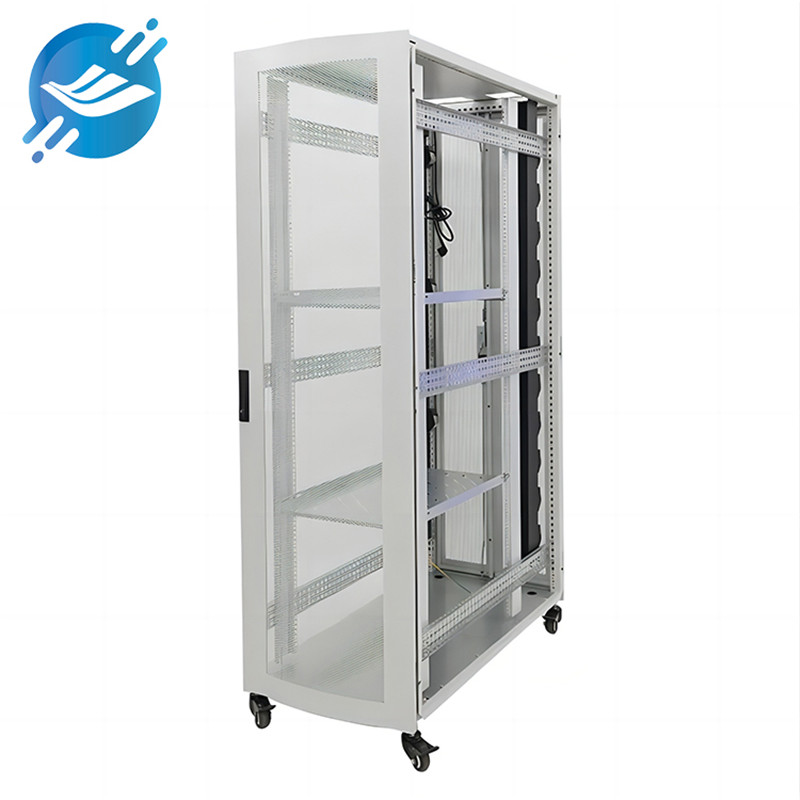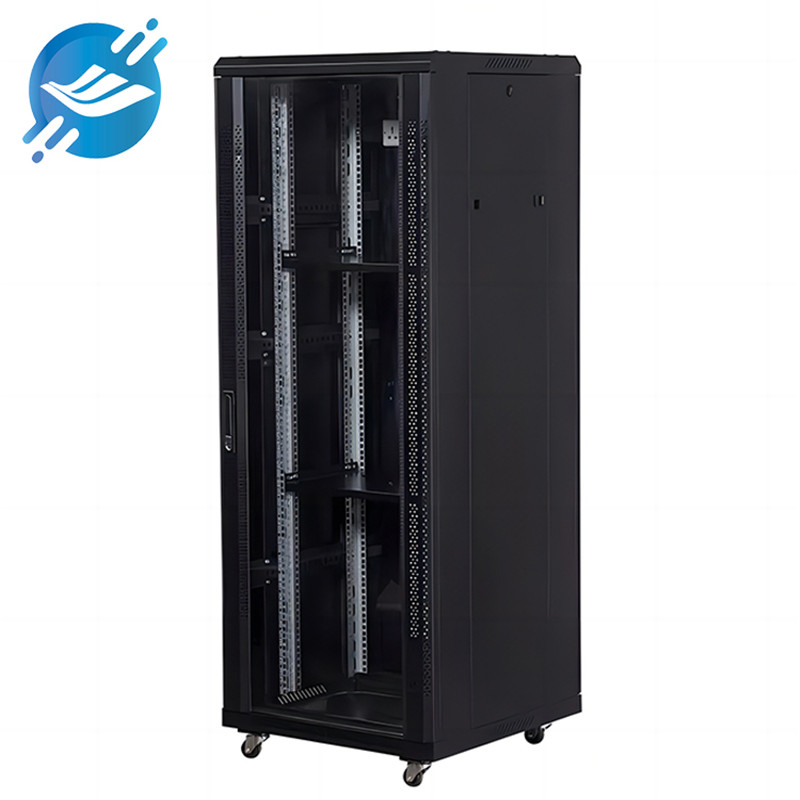As IT equipment becomes increasingly miniaturized, highly integrated, and rack-based, the computer room, the "heart" of the data center, has put forward new requirements and challenges for its construction and management. How to provide a reliable working environment for IT equipment to ensure foolproof power supply and high-density heat dissipation requirements has become the focus of increasing attention of many users.

Outdoor communication cabinet is a type of outdoor cabinet. It refers to a cabinet that is directly under the influence of natural climate and made of metal or non-metallic materials. Unauthorized operators are not allowed to enter and operate. It is provided for wireless communication sites or wired network site workstations. Equipment for outdoor physical work environments and safety systems.

In the traditional concept, practitioners’ traditional definition of cabinets in the data center computer room is: the cabinet is just a carrier of network equipment, servers and other equipment in the data center computer room. So, with the development of data centers, are the uses of cabinets in data center computer rooms changing? Yes. Some manufacturers that focus on computer room products have given cabinets more functions in response to the current development status of data center computer rooms.
1. Improve the overall aesthetics of the computer room with various appearances
Under the standard based on the 19-inch equipment installation width, many manufacturers have innovated the appearance of the cabinets and made various innovative designs considering the appearance of the cabinets in single and multiple environments.
2. Realize intelligent management of cabinets
For data center computer rooms that have high requirements for the operating environment and safety of cabinets, there is an increasing need for intelligent system cabinets to meet relevant requirements. The main intelligence is reflected in the diversification of monitoring functions:
(1) Temperature and humidity monitoring function
The intelligent cabinet system is equipped with a temperature and humidity detection device, which can intelligently monitor the temperature and humidity of the internal environment of the regulated power supply system, and display the monitored temperature and humidity values on the monitoring touch screen in real time.
(2) Smoke detection function
By installing smoke detectors inside the smart cabinet system, the fire status of the smart cabinet system is detected. When an abnormality occurs inside the smart cabinet system, the relevant alarm status can be displayed on the display interface.
(3) Intelligent cooling function
Users can set a set of temperature ranges for the regulated power supply system based on the temperature environment required when the equipment in the cabinet is running. When the temperature in the regulated power supply system exceeds this range, the cooling unit will automatically start working.
(4) System status detection function
The smart cabinet system itself has LED indicators to display its working status and data information collection alarms, and can be displayed intuitively on the LCD touch screen. The interface is beautiful, generous and clear.
(5)Smart device access function
The smart cabinet system has access to smart devices including smart power meters or UPS uninterruptible power supplies. It reads corresponding data parameters through the RS485/RS232 communication interface and Modbus communication protocol, and displays them on the screen in real time.
(6) Relay dynamic output function
When the linkage of the pre-designed system logic is received by the smart cabinet system, a normally open/normally closed message will be sent to the DO channel of the hardware interface to drive the equipment connected to it, such as audible and visual alarms, fans, etc. and other equipment.
Let’s summarize some issues about cabinet size for you. U is a unit that represents the external dimensions of a server and is an abbreviation for unit. The detailed dimensions are determined by the Electronic Industries Association (EIA), an industry group.

The reason for specifying the size of the server is to maintain the appropriate size of the server so that it can be placed on an iron or aluminum rack. There are screw holes for fixing the server on the rack so that it can be aligned with the screw holes of the server, and then fixed with screws to facilitate the installation of each server in the space required.
The specified dimensions are the server's width (48.26cm=19 inches) and height (a multiple of 4.445cm). Because the width is 19 inches, a rack that meets this requirement is sometimes called a "19-inch rack." The basic unit of thickness is 4.445cm, and 1U is 4.445cm. See the table below for details: The appearance of a 19-inch standard cabinet has three conventional indicators: width, height, and depth. Although the installation width of 19-inch panel equipment is 465.1mm, the common physical widths of the cabinets are 600mm and 800mm. The height generally ranges from 0.7M-2.4M, and the common heights of finished 19-inch cabinets are 1.6M and 2M.

The depth of the cabinet generally ranges from 450mm to 1000mm, depending on the size of the equipment in the cabinet. Usually manufacturers can also customize products with special depths. Common depths of finished 19-inch cabinets are 450mm, 600mm, 800mm, 900mm, and 1000mm. The height occupied by the equipment installed in the 19-inch standard cabinet is represented by a special unit "U", 1U=44.45mm. Equipment panels using 19-inch standard cabinets are generally manufactured according to nU specifications. For some non-standard equipment, most of them can be installed into the 19-inch chassis through additional adapter baffles and fixed. Many engineering-grade equipment have panel widths of 19 inches, so 19-inch cabinets are the most common standard cabinet.
42U refers to the height, 1U=44.45mm. A 42u cabinet cannot hold 42 1U servers. Generally, it is normal to put 10-20 servers because they need to be spaced for heat dissipation.

19 inches is 482.6mm wide (there are "ears" on both sides of the device, and the mounting hole distance of the ears is 465mm). The depth of the device is different. The national standard does not specify what the depth must be, so the depth of the device is determined by the manufacturer of the device. Therefore, there is no 1U cabinet, only 1U equipment, and the cabinets range from 4U to 47U. That is, a 42U cabinet can theoretically install 42 1U high equipment, but in practice, it usually contains 10-20 devices. Normal, because they need to be separated for heat dissipation
Post time: Oct-10-2023





